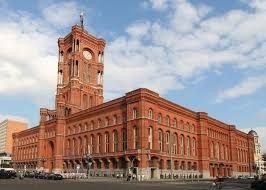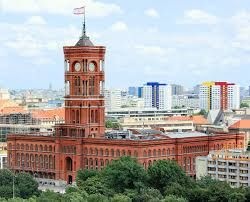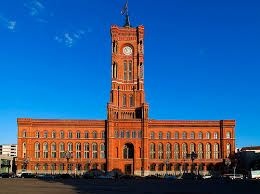The Rathaus was built between 1861 and 1869 in the style of the north Italian High Renaissance by Hermann Friedrich Waesemann. It was modelled on the Old Town Hall of Toruń, today Poland, while the architecture of the tower is reminiscent of the cathedral tower of Notre-Dame de Laon in France. It replaced several individual buildings dating from the Middle Ages and now occupies an entire city block.
The building was heavily damaged by Allied bombing in World War II and rebuilt to the original plans between 1951 and 1956. The Neues Stadthaus, which survived the bombing and had formerly been the head office of Berlin's municipal fire insurance Feuersozietät in Parochialstraße served as the temporary city hall for the post-war city government for all the sectors of Berlin until September 1948. Following that time, it housed only those of the Soviet sector. The reconstructed Rotes Rathaus, then located in the Soviet sector, served as the town hall of East Berlin, while theRathaus Schöneberg was seat of the West Berlin Senate. After German reunification, the administration of reunified Berlin officially moved into the Rotes Rathaus on 1 October 1991.






